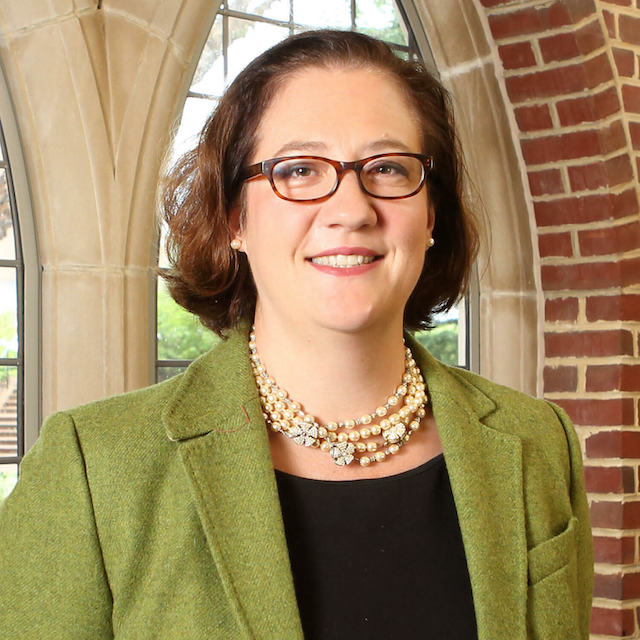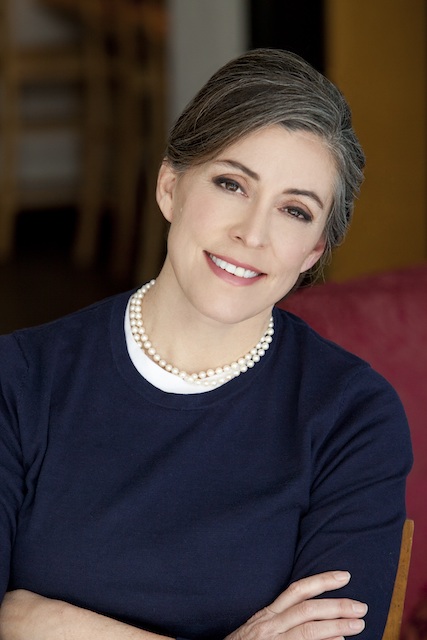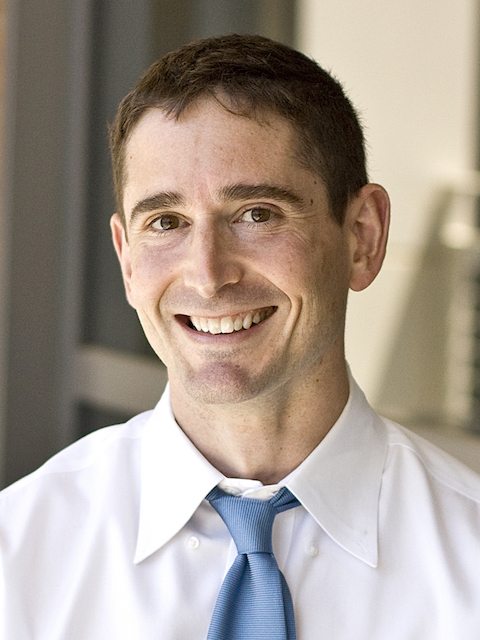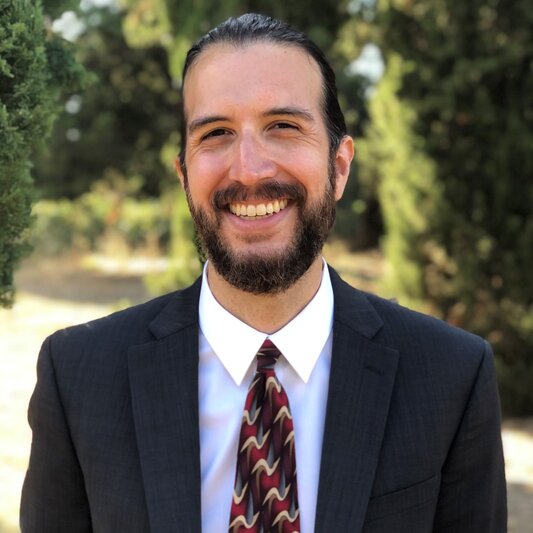Jul 6, 2023 Sergio Pareja
Law professors have the luxury of devoting time to thinking about ways to improve the law. Often this means looking at niche issues that may not arise with much frequency but that remain important. Professor William Drennan has done this quite well in his interesting article, Restricting Funeral Expense Deductions. The article focuses on the narrow issue of the deductibility of extravagant amounts spent at death by decedents who want to build monuments to themselves. While he does not argue that the law should prevent people from using their money for these expenses, his primary point is that society should not offer them a tax subsidy to do so because it promotes socially undesirable expenditures.
Part I of the article discusses average burials in the United States, extravagant burials in general, and the costs of extravagant burials to society. These costs include the tying up of land, the consumption of natural resources, and environmental damage due to the release of embalming fluids as well as other chemicals and metals into the ground, not to mention the environmental impact of using metals and cutting down trees to build ornate coffins.
I found Professor Drennan’s discussion of the history of burials to be fascinating. He notes that throughout history burial of the dead has been the norm rather than the exception. Early in our country’s history, this just meant burial in the ground in simple containers with no embalming. The Civil War increased the use of embalming because family members wanted to see their lost loved ones one final time, which meant that the body had to be preserved to be transported home. In the middle of the 20th century, very few people were cremated, and there was a growing expectation that a gravesite would be maintained and dedicated to the person in perpetuity. By 2010, burial in perpetual-care cemeteries had become the norm for wealthy Americans despite the growing popularity of cremation.
For some very rich people, there has always been a desire to have an exorbitant burial with a perpetual monument. The earliest examples are the pyramids of Egypt. More recently, in the same spirit, real estate baroness and “Queen of Mean,” Leona Helmsley, dedicated $3 million of her estate for the care and maintenance of a 1,300 square foot, $1.4 million mausoleum in Sleepy Hollow, New York, as final resting place for herself and her husband.
Part II of the article discusses the federal estate tax and specifically focuses on the deduction for funeral expenses. Although the estate tax now only impacts very large estates, its reach changes over time, and it could once again apply to more estates in the future. Currently, the estate tax is effectively a flat tax of 40 percent. The law provides that funeral expenses paid from the estate are deductible in calculating the federal estate tax. This means that, for taxable estates, each dollar paid out for funeral expenses saves 40 cents in taxes, which effectively encourages wealthy taxpayers to spend lavishly on their memorials.
Part III of the article analyzes policy concerns related to burials. Here, Professor Drennan focuses on the reasons why people want to bury the dead in cemeteries, including the desire to treat decedents with respect, a wish to help survivors with their grief, the need to prevent the spread of disease, and a wish to minimize the unpleasantness associated with death. He proposes bifurcating burial expenses into two components: (1) expenses that are compelled by law or social custom, and (2) expenses that are incurred voluntarily by the decedent.
In Part III, Professor Drennan also notes that some state laws hint at this bifurcation by limiting the amount that can be paid for funeral expenses when a decedent is insolvent because that money is effectively coming from the decedent’s creditors. In the same vein, a Treasury Regulation limits the deduction to a “reasonable expenditure for a tombstone, monument, or mausoleum, or for a burial lot,” although, as Professor Drennan observes, this reasonableness requirement may be invalid because it fails to appear in the text of the statute. Even if enforceable, the rule is not broad enough to regulate the tax treatment of extravagant burials because it does not limit deductions for other big ticket expenditures such as ornate coffins.
Professor Drennan identifies three options for reforming our current law. First, Congress could simply repeal I.R.C. § 2053(a)(1), which would preclude an estate from deducting any funeral expenses. Second, Congress could cap the funeral expense deduction at a specific dollar amount. Third, Congress could amend I.R.C. § 2053(a)(1) to limit the deduction to “reasonable” funeral expenses.
After analyzing the three reform options, Professor Drennan endorses a cap on the estate tax funeral expense deduction. Specifically, he would cap it at an amount approximating the average cost of an American burial. One way to do this, without recalculating the average cost each year, would be to adopt the gift tax annual exclusion amount (currently $17,000) as a proxy because that exclusion is periodically adjusted for inflation. This is the approach that he recommends.
Professor Drennan has written a thought-provoking article. I especially like his bifurcated approach to analyzing burial expenditures. While this may be a niche issue, I think he is correct that an unrestricted deduction does not make sense because it incentivizes behavior that is not particularly good for society. He correctly notes that there are a variety of ways in which we could create a reasonable limitation, and I think tying the cap to the gift tax annual exclusion is a simple solution that would adequately address the problem.
Jun 22, 2023 Allison Anna Tait
Victoria Haneman,
Prepaid Death, 59
Harv. J. on Legis. 329 (2022).
Victoria Haneman’s recent article, Prepaid Death, is a call for change in the way that people shop for and ultimately purchase burial and funeral services as well as a plea for policy reforms that would encourage consumers to make these important decisions pre-need rather than at the time of death. At death, the time of need, family members and others involved in the funeral services selection are grieving, vulnerable, and willing to pay exorbitant amounts for things that the decedent might not even have wanted. As Haneman points out: “The pre-need consumer is cost-sensitive and far less likely to make decisions that are time-pressured or driven by guilt. Although decisions may be unfamiliar, there is time to research and familiarize oneself with options and providers — including new and innovative death care technologies that may not be on the menu of choices offered at one’s local funeral home.” She also points out that when consumers have more time to explore their options, low- and middle-income consumers benefit because of increased opportunities to access financing options.
The solution that Haneman suggests is leveraging Internal Revenue Code section 125 and flexible spending account principles. The current Flexible Spending Accounts (FSAs) program allows eligible employees to make voluntary pre-tax contributions for certain qualified benefits that do not currently include death care. One option would be to allow consumers to create a dedicated Death Care Flexible Spending Account funded with pre-tax earnings contributed to this earmarked account. A second option would be to continue using FSAs in their current form but add death care expenses to the list of reimbursable “qualified expenses.”
This proposal constitutes an eminently reasonable approach not only to funding death care expenses but also to nudging consumers toward pre-need shopping. For this proposal alone the article stands as an important contribution in the death care literature. In addition, however, as Haneman takes the reader through her analysis, she identifies three important economies that center around death. First, there is the corporate economy, driven by an industry that is only slowly coming to change and whose practices remain for the most part mired in the past. Second, there are household and family economies that intersect with – and generally suffer from – conventional corporate practices. Lastly, there is a cultural economy that informs and influences consumer decision-making by setting certain standards for burial and linking them to prestige, prosperity, and even sentiment for the deceased. These three economies –networks of exchange, wealth, and resources– are all relevant areas of inquiry about death care that merit pause for further discussion.
In terms of the corporate economy, Haneman tells us not only that “[d]eath has become a large, lucrative, bureaucratic, corporate business over the span of five generations” but also that “[t]he business of death is managed by a death care industrial complex with revenues projected to exceed $68 billion by 2023.” And, for the most part, it is an industry with highly entrenched practices that are both outdated and expensive. Putting a face to the industry, Haneman also notes that “[t]he average funeral director or mortician in the United States is a white (77.6%), middle-aged (51.8 years old) man (69.1%) offering products and services in line with what has been offered for at least half a century.” Moreover, the prepaid funeral industry, as a subset of this corporate economy, has long engendered companies running fraudulent schemes and financial elder abuse. Change is afoot (new burial practices, hip morticians, and cutting edge advertising), Haneman tells us, but it has come late to an industry that has been highly corporatized and highly resistant to innovation.
A related and intersecting economy — or set of multiple economies — is that of household and personal finance. In this realm of personal economy, the concern that drives Haneman, and one that deserves greater attention, is the concept of funeral poverty. Haneman points out that funeral costs are the “the third largest category of expense incurred over a lifetime.” To contextualize the outsized cost of funerals, Haneman reminds the reader that “[i]t is estimated that 40% of Americans would have great difficulty contending with an unexpected $400 expense and fewer than 40% could afford to pay the surprise $1,000 expense out of savings.” Death, in this way, can be both “emotionally devastating” and “economically shattering.” Stepping into the breach, predictably, there are now funeral lenders who target such “subprime” borrowers and “offer financing for funerary expenses with interest rates advertised as high as 35.99%.” Thinking about the ways in which low-income families can more easily bear the unavoidable expense of burying a family member or other loved one is an important component of Haneman’s proposal for pre-need planning, and the ability of every family and household to afford a certain standard of burial service bears further thought and policy intervention. These kinds of interventions would recognize, as Haneman does, that “[a] failure to provide for oneself or one’s dependents is stigmatized and often accompanied by feelings of shame, inadequacy, and inferiority …. [and] [b]ereavement compounds this sense of failure.”
The feelings of shame that come with the inability to afford a “proper” funeral take us directly into the third relevant economy, which is the cultural economy, or a network and exchange of norms and expectations around death. It is not surprising that “lower-income families spend far more than higher-income families, relative to total expenditures [on funeral costs],” but what might be surprising is that “in 2014, the top 1% spent less on funerals than everyone else—in share of total expenditures, but also … in absolute dollars. Conversely, the poor spent a ‘26% greater share of total expenditures than the national average.’” These data points, Haneman suggests, affirm certain historical and cultural norms, in particular the Anglo-American idea that spending on funerals was a way for lower-income families in Edwardian and Victorian England to display status (The Great British Bake Off fans might remember the funeral biscuits many seasons back). What the data points certainly underscore is that there are, as Haneman observes, “many layers undergirding the need for showy, costly, public ceremonies.” These include: “spending to satisfy community expectations, honor cultural traditions, or avoid peer judgment; conspicuous consumption designed to signal the prestige of the family or decedent; spending at a level deemed respectable to honor the deceased or to avoid peer judgment; or a fear of what others in the community will think if spending is limited.” Low-income families will not necessarily buy the most economical funeral services, even if they shop pre-need, and therefore changing the future of funeral planning cannot happen without recognizing and understanding the multiplicity of cultural imperatives that drive consumption.
Asking readers to think about all these interlocking economies, Haneman brings to the fore some of the most interesting and salient aspects of death care and the funeral industry. And in so doing, she highlights perennial questions about corporate power, household budgeting, and the tie between law and culture.
May 23, 2023 Victoria J. Haneman
Kate Falconer,
Trusts over Cremated Ashes, 15
Journal of Equity 283 (2021), availible at
SSRN (December 1, 2021).
The “law of the dead” or the law of human remains is regarded as an emerging field of study that considers rights to physical possession of the deceased and control over their disposition. In the United States, it is an idiosyncratic area of the law that dresses the concept of remembering in positive legal protections. In memory of the living, we afford a now-empty vessel with quasi-property status to protect against disrespect or defilement. The law of the dead in the United States has developed in an inconsistent and formalistic way, arguably with the funeral industry having an oversized role in the process of rulemaking. In guiding the law of the dead toward more cohesive and forward-thinking rules, it is important to consider the way in which other countries address disputes involving human remains. Trusts Over Cremated Ashes, by Kate Falconer, published in 2021 in the Journal of Equity, considers the use of “cremated ashes trusts” by the Australian courts.
Cremation is a popular method of disposition in Australia, accounting for an estimated 65% of deaths. Comparatively, the U.S. cremation rate was 57.5% in 2021. Roughly 20% to 40% of cremated remains (“cremains”) are interred in a cemetery (either stored in a columbarium or buried) and the remainder are either maintained somewhere other than a cemetery, dispersed, or repurposed. It is not uncommon for disputes to arise over who is entitled to possess and manage the cremains, and the law is not necessarily efficient or consistent in dictating a result. Contemporary U.S. law consists of a patchwork of state statutes that overlay the common law nullius in bonus (“no property in a dead body”) rule, which provides no legal right for a decedent to dictate a preferred method of final disposition. Although some states would like to grant the decedent this right, current statutes frequently lack enforcement mechanisms.
In Trusts Over Cremated Ashes, Prof. Falconer calls attention to the emotionally layered nature of burial and disposition disputes, noting that “identifying the appropriate holder of the right to possession in relation to a particular deceased body…does little to resolve the myriad of emotional and social issues that underpin burial disputes.” Religious requirements, cultural expectations, guilt and/or grief, and family power struggles may simultaneously undergird these conflicts. Disposition of cremains through burial or interment is fairly straightforward, but alternative or less traditional disposition of cremains is not. The death services industry now provides consumers with a broad menu of options for disposition or repurposing of cremains. Cremated remains may be scattered in a dissolving water urn, placed at the base of a tree, infused into tattoo ink, sent to space, dispersed through fireworks, incorporated into a coral reef, or pressed into a vinyl record. The remains may also be stored in wall art or statuary, sports-themed urns, or wearable jewelry with keepsake compartments. Cremains may also be repurposed and take new form, such as glass keepsakes, diamonds, or pearls. Use of a cremated ashes trust by the Australian courts implicitly acknowledges that no one right-holder should have the legal authority to control disposal of cremains without consideration of the wishes of others.
Australian courts are imposing the cremated ashes trust as one legal approach to resolve disputes over disposition of final remains. These are not actual trusts created by a settlor, but rather, a trust created through a court’s power over assets (cremains) in controversy. Consequently, Professor Falconer calls into question whether the cremated ashes trust has been placed in the wrong doctrinal home by Australian courts. Courts have been characterizing the cremated ashes trust as an express purpose trust, and the author advances a compelling argument that this trust is more appropriately labeled a constructive trust. The language of trusteeship is used by courts imposing a cremated ashes trust, with the author noting that these trusts have “trust property, trust objects, a trustee, and a personal obligation on that trustee in relation to the trust property . . . [but intent to create the trust] is conspicuously absent.” Courts have a specific policy purpose in imposing these trusts, which is to prevent unconscionability in disputes over disposition. The trustee is a right-holder over the cremains, with her position arising as of the moment that cremated remains come into being—but importantly, there is no intent (express or presumed) to create the trust prior to the involvement of the court. The absence of intent precludes qualification as an express trust, and thus, it is a “remedial institution” or an example of remedial discretion used by a court that is “shaping the cremation ashes trust to fit the nature of the dispute before them.”
The author notes that her article is of “immense practical importance to the law of the dead,” and I am inclined to agree. There is little scholarship or case law that considers the rights and privileges of stakeholders in grief. This type of scholarship serves as a departure point for important conversations concerning the contemporary need for the decedent to have an enforceable right to dictate disposition. More importantly, however, Trusts Over Cremated Ashes causes the reader to ponder the creative ways in which constructive trusts might be used by U.S. courts to fashion a more equitable resolution in disputes over cremated remains. Although an adversarial justice system has a fondness for clearly defining winner over loser, perhaps there are better ways to approach disputes rooted in grief.
Apr 24, 2023 Katheleen Guzman
Scholarship brings variety. Complex constructions that drag readers through thickets; subtle and sublime ones suggesting some knowing inner ring; irony with head feints that leave the reader thunderstruck when the rug is pulled – each form can delight, with the best scholarship inviting others into the mind (if not heart) of its author. Reading this sort of piece can feel a bit like a temporary possession, every bit as exhausting as its writing may have been.
Richard Ausness pulls no such punches. In These Are a Few of My Least Favorite Things, he squares up unafraid to take down assorted aspects of the 1990 Revised Uniform Probate Code with an approach that is rapid but measured and always direct. There is much to be said for writing that inspires readers to see brand new things. But there is also something thrilling about seeing the same old things anew.
Five provisions of the ’90 UPC draw Prof. Ausness’s ire: Representation, Harmless Error, Revival, Anti-Lapse, and Ademption by Extinction. As he acknowledges, not one of them is new, and he intimates (but sidesteps) the heavy theoretic grounds upon which all of them could have been engaged (some quite recently and brilliantly), and I often found myself disagreeing with his assertions or, at least, wanting more. But I kept coming back. Per capita at each generation is “overly complex“; harmless error, “well-intentioned but problematic”; ’90 UPC treatment of revival is “busy and cluttered,” anti-lapse, “convoluted,” ademption, “worse than” either the intent or identity theories it contains. Whether or not one agrees with his ultimate conclusions, Prof. Ausness’s logic is clear, and the efficiency with which he sets up his issues, hits their historical and modern play, then takes them down by turns is refreshing. This piece does not ask its readers to follow the author’s lead into brand new theory or deep design. It does, however, demand a second look at assorted UPC solutions that were presumably perceived on adoption and since as superior to those they replaced. There is a courage here, not least in taking on the UPC by arguing for its own prior version. Professor Ausness is unafraid to kill off newer and cleverer darlings, and to argue for the retreat to principles of about 50 years past if he perceives a better product would result.
The article rhythmically moves through issue, principle, traditional approach, ’90 UPC treatment, critique. In this way, Prof. Ausness creates an accessible, predictable structure, nicely frames trajectories, and situates the mood about formalism that must have informed the entire ’90 project. As each topic was introduced, I would begin by fretting that I would not learn much new other than how the author “felt.” That I was wrong each time made me reconsider principles that I thought I’d long internalized, agreed with, and even defended, and opened my mind to how a student might confront the issue for the first time. Moreover, I acknowledged that doctrinal approaches I may have considered as my own favorites – horizontal equality, or the switchback presumptions around revocation and revival – were possibly valued more for sudoku-ish fun in game mastery than for how they encouraged or discouraged litigation, affected the efficient probate of estates, or effected a decedent’s last wishes.
That may be what I most admired about Prof. Ausness’s retelling of old stories. He moved past the merely shiny, cozy, or cute – the bright copper kettles, the whiskers or mittens – in favor of that which, to him, most mattered: does the application of X principle generate an outcome that the decedent likely wanted, and at what probable cost? Stern as it may be, he is ill-inclined, for example, to rescue would-be testators from their own failure to achieve what he sees as easy tasks (e.g., executing a statutorily compliant will). I have admittedly argued long and often for the relaxed formalism that doctrines such as “harmless error” – one of those ’90 UPC darlings – allows. But with concise matter-of-factness, Prof. Ausness reminds us that what smart drafters of a uniform act might believe about the implications of testators’ actions (e.g., when they revoke a later will, or mortgage bequeathed property) might be far less obvious than the drafters convinced themselves that they were. He also reminds us that all choices come at a cost.
My Least Favorite Things holds it all there within reach, recounting principled tradeoffs between values that endure: cost and intent, efficiency and justice, games “worth candles” and those less so, marginal improvements for individuals and collective gains for groups. It also sends a more gentle but powerful reminder: things little favored, such as dog bites or bee stings, can be avoided by steering clear of biting dogs or stinging bees. If so, perhaps the best way to avoid convoluted, intent-defeating, tricky or expensive principles that may be found in majority rules, model codes or uniform acts is to draft around them in the first instance, wherever possible, with all of the clarity of intent and purpose, conscientiousness and care, that the situation demands.
The simplest solutions may be those that matter most.
Mar 21, 2023 Sarah Waldeck
The reason I liked Adam J. Hirsch’s article is in its title: When Beneficiaries Predecease: An Empirical Analysis. Empirical analysis is particularly useful for the default rules governing wills. Most of these rules are intent-furthering, meaning that they ordain the result that legislatures and the Uniform Law Commission think most testators prefer.
Provisions about lapse and antilapse are part of the default rule lexicon for wills. Tempora mutantur may be a universal truth, but some testators nonetheless fail to provide any instructions about what do if a beneficiary predeceases them. The rules of lapse and antilapse fill this gap in the testator’s will. Setting aside some jurisdictional niceties, the rules of lapse are simple enough: (1) property left to the deceased beneficiary goes to the takers of the residuary estate; and (2) if the deceased beneficiary was to receive part or all of the residue, the property goes to either the other takers of the residue or to the testator’s heirs at law.
Unless, that is, an antilapse statute applies. These statutes make the rules governing lapse inapplicable to certain deceased beneficiaries. Instead, in all but one state, the property left to the deceased beneficiary goes to the deceased beneficiary’s descendants.
Sounds simple enough, except that it’s not. As Hirsch explains, there is tremendous jurisdictional variation in which beneficiaries are covered by antilapse statutes. Some states include all blood relatives; others include all blood relatives who are descendants of great-grandparents; others include all blood relatives who are descendants of grandparents; still others include blood relatives and step-children; and on and on and on. (P. 12.) Hirsch writes, “Viewed as a whole, American antilapse statutes’ most salient characteristic is heterogeneity. States have reached a consensus on who the alternative beneficiaries should be—namely, descendants of a predeceasing beneficiary—but on the question of which beneficiaries should come within the ambit of the statute and which should not, widespread divisions remain.” (P. 13.)
One way to resolve these divisions is to investigate actual preferences; that is, to determine what testators want when they leave property to a beneficiary who predeceases them. Previous empirical studies have attempted to answer this question by reviewing wills submitted for probate—a painstaking and time-consuming process that necessarily limits the amount of data collected. Hirsch takes a different tack, undertaking his investigation with the help of an electronic polling firm. Together they conducted five different surveys, with more than 5,000 respondents in total. (P. 38.)
Hirsch’s empirical work suggests that “the statutory formula that steers lapsed bequests alternatively to a beneficiary’s descendants or the residuary beneficiaries” mostly reflects the popular preference—that is, the statutory formula is intent-furthering. (P. 45.) But the “dividing lines”—which beneficiaries fall within antilapse statutes—are both under and over inclusive. (P. 46.)
Take, for example, the over inclusivity regarding sibling beneficiaries and more distant relatives of the testator. Most antilapse statutes apply to siblings of the testator, so that when a sibling predeceases the testator, any property left to the sibling goes to the sibling’s descendants (the nieces, nephews and niblings of the testator). But almost half of the respondents in Hirsch’s survey preferred for the gift to simply fall into the residuary clause. Only 30 percent of respondents preferred that the deceased sibling’s descendants take the property—the result in jurisdictions that apply antilapse statutes to sibling beneficiaries. With more distant relatives, antilapse statutes are even less intent-furthering. Fifty-seven percent of Hirsch’s respondents preferred that gifts to predeceased distant relatives fall into the residue, with only about 20 percent wanting to give the property to the relative’s own descendants. Hirsch’s work thus raises substantial questions about whether antilapse statutes should apply to siblings and more distant relatives.
As an example of under inclusivity, Hirsch’s results suggest that jurisdictions need to re-think bequests to predeceased spouses. In most states, spouses do not fall within the ambit of antilapse statutes. Rather, the ordinary rules of lapse apply, causing any gift to a predeceased spouse to fall into the residue or, if the spouse is taking the residue, causing the gift to be shared with other takers of the residue or to go to the testator’s heirs at law. But about 65 percent of Hirsch’s respondents indicated that they would prefer that any gift to a predeceased spouse simply go to the respondent’s own children. This suggests that (1) states should apply antilapse statutes to predeceased spouses, and (2) when so doing, states should depart from the usual approach of directing the deceased beneficiary’s gift to the deceased beneficiary’s own descendants. (Note that in any marriage with stepchildren, the testator and the predeceased spouse may have different descendants.)
To avoid making this jot one giant spoiler, I will resist the temptation to further summarize Hirsch’s findings. But When Beneficiaries Predecease: An Empirical Analysis is full of thought-provoking, data-driven suggestions for statutory reform. Moreover, as Hirsch writes, “the chasm yawning between lawmakers’ assumptions [about what testators want] and empirical reality” holds larger lessons. Lawmakers have overestimated their ability to predict preferences without data.” I hope that Hirsch’s study is the beginning of an effort to empirically evaluate whether the default rules of wills are as intent-furthering as lawmakers assume.
Feb 9, 2023 Michael Yu
In the field of inheritance law, will execution and revocation formalities loom large because, traditionally, courts have demanded strict compliance with statutory procedures for creating and revoking a testamentary instrument. As to the law of revoking wills in their entirety, Professor David Horton, in Revoking Wills, argues that the high formalism of will revocation doctrine is problematic and should be loosened by: (1) courts increasing their nascent use of the constructive trust in certain failed will revocations, (2) extending the harmless error rule into will revocation law, and (3) as “a novel path forward: importing the will revocation formalities from trust law.” (P. 563.)
To help frame his critique of will revocation law, Professor Horton first summarizes will execution law, which “has long been synonymous with ‘harsh and relentless formalism.'” (P. 573, quoting Professor John Langbein.) The oft-cited benefits of will execution formalities include: (1) the “evidentiary” function of ensuring that the decedent’s wishes are in a “reliable and permanent form”, (2) the “ritual” or “cautionary” function that protects against “inconsiderate action”, (3) the “protective” function of “shielding testators from fraud and undue influence”, and (4) the “channeling function” of “standardizing the appearance of testamentary instruments”. (Pp. 575-76, citations omitted.) Professor Horton argues, however, that the formalities in will execution law are becoming more flexible, as seen in the rise of the harmless error rule and statutes governing electronic wills. (Pp. 579-80.)
Professor Horton next critiques will revocation formalities. As to the rule that “a revocatory act performed on a mere [] copy is legally ineffective” (the “copy rule”) (P. 587), Professor Horton concedes that it serves the four oft-cited benefits and functions of formalities, but that “these benefits come at a hefty price”, citing cases of failed will revocations even though the testator defaced the copy, showed evidence of revocatory intent, or even followed a lawyer’s instructions to revoke a will copy. (Pp. 597-98.)
As to the rule that a third party may only revoke the testator’s will by act in the testator’s presence, Professor Horton persuasively argues that any evidentiary function of requiring the testator’s presence in a third-party will revocation “does not generate proof of anything” if witnesses are not also required. If evidence is examined at a trial, “the testator will be deceased and thus unable to testify.” (P. 599.) Professor Horton notes that requiring the third party to revoke a will “at the testator’s direction” (and not necessarily in the testator’s presence) prevents inadvertent or fraudulent will revocation. (Pp. 599-600.)
As to the rule that subsequent writings revoking wills must satisfy the formalities of will execution (a concept that Professor Horton calls “the equal dignity principle”) (P. 582), Professor Horton submits that it “glosses over meaningful divergences between execution and revocation” and theorizes that “deterring bogus [will] revocations may not be as important as deterring the creation of bogus wills.” (Pp. 601-02.) Professor Horton notes that the execution of sham wills is a “legitimate concern, in part, because they can benefit anyone” whereas the only people profiting from a will being revoked in its entirety are either intestate heirs or the beneficiaries of a prior instrument. (P. 602.)
Professor Horton also critiques the extremely rigid requirement found in some states that a will can be revoked only by a subsequent will that conveys property. In states that impose this requirement, courts have felt compelled to disregard a purely revocatory instrument devoid of any affirmative property dispositions (a type of document that Professor Horton calls an “anti-will”). Professor Horton argues that “[r]efusing to enforce anti-wills is absurd” and “does not serve any of the purposes of the execution formalities.” (Pp. 590, 603-04.) He persuasively notes that requiring a revoking will to make a conveyance: (1) does not make the testator’s revocatory intent clearer, (2) does not increase the thoughtfulness or voluntariness of the testator’s revocation, (3) does not make any probate proceeding easier, and (4) does not increase the will’s reliability, which is already assured under the equal dignity principle. (P. 603.)
A will can be revoked without witnesses or a subsequent will by the testator’s performance of a revocatory act, such as cancellation or destruction, upon the will. Professor Horton, however, describes the “spectacular revocation failures” arising from the cancellation rule that requires revocatory words such as “void” or “I revoke” to be inscribed by the testator on the language of a will rather than by a third party or on a blank space within the document. (P. 604.) Professor Horton discusses cases in which cancellation language did not touch any language of the will, so it had no legal effect; in other cases, courts disregarded attempted revocations where the language was written by a lawyer, rather than the testator. Professor Horton insightfully notes that writing words of cancellation “serves the evidentiary, ritual, protective, and channeling functions better than other ways of revoking by act” because the testator often writes the reason for revoking the will and the testator’s handwriting and signature are “far more probative of the testator’s [revocatory] intent than drawing lines, tearing, or burning the will, ‘which can sometimes be ambiguous.'” (P. 605, citation omitted.)
Electronic wills are on the rise, and Professor Horton contends that “electronic will revocation laws suffer from several ambiguities and omissions.” (P. 605.) Professor Horton’s insights about the revocation of electronic wills are too numerous to address within this jot, but suffice it to say that he raises interesting questions about: (1) how deleting an electronic file to a “recycle bin” might not comply with invalidation rules that require a revoked electronic will to be rendered “inaccessible” or “unreadable”, (2) problems created by the existence of electronic copies of electronic wills, and (3) potential barriers to revocation introduced by third-party e-will custodians. (Pp. 605-08.)
Because will revocation rules sometimes fail to serve the same evidentiary, ritual, protective, and channeling functions as will execution formalities, and, because strict will revocation formalism often thwarts a testator’s intentions, Professor Horton supports “softening the blow” of will revocation formalities. (P. 608).
First, Professor Horton recommends that courts increase their use of constructive trusts, which some courts have imposed to prevent “inheritances that would be an undeserved windfall.” (P. 608.) A constructive trust is no “panacea” for Professor Horton, however, because: (1) some courts refuse to impose a constructive trust “on the grounds that doing so would be an improper end-run around the [will] revocation formalities”, (2) it might not be available when “there is an error in the execution of [a] document”, and (3) a plaintiff seeking one must meet a high standard of providing proof “so clear, convincing, strong, and unequivocal as to lead to one conclusion.” (Pp. 611-12.)
Second, Professor Horton applauds the 1990 UPC’s attempt to de-formalize will revocation law but argues that it took only “modest steps.” (P. 612.) The 1990 UPC provides that a revocatory act (such as words of cancellation) is effective “whether or not [it] . . . touched any of the words on the will.” (P. 612.) Also, the 1990 UPC expanded the harmless error rule to anti-wills, applying it to “a partial or complete revocation of the will.” (P. 613, citation omitted.) Professor Horton notes, however, that the harmless error rule “could not cure a would-be revocation that violates the copy rule or the presence requirement.” (P. 613.)
Professor Horton concludes by proposing that will revocation law should import the “pliable rules that govern the revocation of a trust.” (P. 614.) He notes that in trust law, “[s]ettlors usually do not need to satisfy rigid mandates” because of trust revocation law’s two-tiers: first, settlors generally may revoke a trust “in any way that provides clear and convincing evidence of the[ir] . . . intention to do so”, and, second, settlors wanting stricter revocation rules may customize the procedures for trust alteration (for example, by requiring delivery of a signed revocation to the trustee) through inclusion of express language in the trust . (P. 615.) The benefits of will revocation law mirroring trust revocation law include, per Professor Horton: (1) liberating testators from will revocation formalities and (2) harmonizing revocation rules for both paper and electronic wills. (P. 615.)
It seems as if the time has come to talk about will revocation law. I was persuaded by Professor Horton’s argument that revoking wills is different from executing wills–the formalities for the latter may not be needed for the former. At a minimum, states should implement the 1990 UPC revisions that (1) allow revocation even if the revocatory act does not touch any words on the will, and (2) expand the harmless error rule to anti-wills. To my mind, Professor Horton’s proposal to import trust revocation formalities into will revocation law would be another useful way to respect and effectuate testamentary intent. Thanks to Professor Horton for showing us how will revocation law can be improved!
Jan 6, 2023 David Horton
Jeffrey N. Pennell & Reid Kress Weisbord,
Trust Alteration and the Dead Hand Paradox, 48
ACTEC L.J. _ (forthcoming 2023), available at
SSRN.
I don’t know about you, but, in all of my courses, there’s at least one topic I dread teaching. In Trusts, Wills, and Estates, that dishonor goes to the rules that govern the modification and termination of trusts. For starters, judge-made law, the Restatement of Trusts, the Uniform Trust Code, and the law of California (where I teach) march to their own subtly different drumbeat. In addition, the black letter law is filled with word balloons like “material purpose” and “general charitable intent.” Every semester, I see the subject approaching on my syllabus like an angry bull.
But when that time comes next year, I’ll be armed with Jeffrey N. Pennell and Reid Kress Weisbord’s new article, Trust Alteration and the Dead Hand Paradox. This engaging and exhaustively researched piece will sharpen the reader’s understanding of trust modification and termination. In addition, it makes three contributions to the literature.
First, Pennell and Weisbord describe what they call the “dead hand paradox.” (P. 3.) Because many states have abrogated the Rule Against Perpetuities, settlors can control their property long after they die. Indeed, many of the trusts established today will last until there are so many beneficiaries that they won’t be able to fit into the Rose Bowl. Yet the more settlors try to micromanage, the less likely they are to achieve their goals. A beneficiary may suffer from an expensive illness but be ineligible for Medicaid because of mandatory trust income. A settlor might prohibit the trustee from selling stock in a company that goes the way of the dodo. To embellish an old Yiddish saying, if you want God to laugh, make an estate plan.
Second, Pennell and Weisbord show that the dead hand paradox is pushing trust law in new directions. In general, courts still bend over backwards to respect a settlor’s intent. For example, under the unforgiving Claflin doctrine, courts can only alter a trust if (1) all the beneficiaries consent and (2) the change wouldn’t violate a material purpose of the settlor. Despite the Uniform Trust Code’s attempt to relax Claflin’s grip, many judges continue to find that a spendthrift clause “is a material purpose of the contested trust.” (P. 19.) At the same time, though, the legal system is recognizing that “settlor-imposed restrictions tend to lose durability in the long run unless courts or fiduciaries are empowered to alter those restrictions.” (P. 50.) Thus, some judges are granting petitions to modify a trust to accomplish the settlor’s tax-minimization objectives. In an even more dramatic development, lawmakers are experimenting with the practice of “trust decanting,” which essentially allows certain trustees to “pour” assets into a new trust without judicial approval.
Third, Pennell and Weisbord explore the dark side of trust modification and termination. Recently, authors such as Allison Tait and Felix Chang have criticized dynastic trusts for perpetuating economic inequality. Similarly, Pennell and Weisbord explain that the law currently allows well-heeled settlors to shield assets from “taxes, greedy family members, and incompetent management.” (P. 48.) Thus, they suggest that the modification and termination doctrines should factor into the debate over trusts and entrenched privilege.
In sum, Pennell and Weisbord reveal that trust alteration rules will soon become tremendously important. As directions in perpetual trusts become increasingly obsolete, thoughtful work like theirs can help lawmakers and courts balance testamentary freedom with the brute truth that “the judgment of [a] mediocre mind” today is “incomparably preferable” to the guess two decades ago “of the greatest [genius] who ever lived.”
Editor’s Note: Reviewers choose what to review without input from Section Editors. Jotwell Trusts and Estates Section Editor, Reid Weisbord, had no role in the editing of this article.
Nov 29, 2022 Phyllis C. Taite
Attorney Matthew Van Leer-Greenberg evaluates the continued relevance of family limited partnerships (“FLPs”) in estate planning. FLPs have been excellent tools for asset protection, continuity of control, succession planning, and attainment of substantial tax benefits. With other options such as limited liablity companies and corporations offering some of the benefits of FLPs, Leer-Greenberg explores whether recent cases have diluted key benefits of FLPs—namely, valuation discounts and exclusion from the gross estate for estate tax purposes.
In Family Limited Parnerships: Are They Still a Viable Weapon in the Estate Planner’s Arsenal?, Leer-Greenberg begins by discussing Internal Revenue Code (“IRC”) § 2036, a key provision for tax planning benefits of FLPs that generally requires inclusion of transfers with a retained life estate in the decedent’s gross estate. FLPs can be structured in ways that remove the transfer from the transferor’s gross estate at death while discounting the value of the lifetime transfer for purposes of the gift tax during life. To achieve the intended outcome from a transfer to a FLP, the transferor must give up control and make a bona fide gift or sale of the interest.
Next, Leer-Greenberg discusses various benefits of FLPs. Continuity of control provides the benefit of continued access and control by the transferor post transfer. Further he discusses how FLPs are great instruments for consolidation and asset protection while reducing tax liability if set up properly. As such, FLPs are great estate planning tools for creating and transferring inter-generational wealth. These benefits are less effectively obtained through traditional gifts or sales; therefore, FLPs are preferred methods for wealth and succession planning.
Because FLPs are subject to abuse, the Internal Revenue Service Commissioner (“Commissioner”) has challenged the legitimacy of the transfers and the valuation discounts. Leer-Greenberg discusses the impact of Strangi v Commissioner on FLP jurisprudence. Strangi is known for focusing on implied agreements and the lack of legitimate and significant non-tax reasons for establishing the FLPs as grounds for rejecting valuation discounts. Post Strangi, he explains how estate planners have used Strangi for guidance on how to structure FLPs to avoid estate tax inclusion.
Leer-Greenberg also discusses Estate of Powell v Commissioner, where the Tax Court addressed the timing of transfers and assignment of partnership interests. The court disregarded the FLP and included the assets in the gross estate under § 2036 because the transferor had a retained interest. Specifically, the transferor had control, in conjunction with another, to make distribution decisions on the date of death. Both cases indicate estate planners must exercise caution when drafting FLPs.
These cases, and others, lead to Leer-Greenberg’s query as to whether FLPs are still viable as estate planning tools. Given the increased exemption amount, along with with the unused spousal credit, he questions whether it is widely beneficial to engage in tax planning, since most people will not be subjected to an estate tax. He concludes that state estate tax consequences still loom, and therefore, the tax planning aspect of FLP planning remains relevant to wealthy taxpayers.
Leer-Greenberg then gives clear recommendations for estate planners to maximize benefits of FLPs in the estate plan. He indicates they should be mindful to avoid deathbed transfers, to clearly indicate legitimate non-tax reasons for establishing the FLP, and to avoid transferring too many assets so the transfor will not require distributions from the FLP. Finally, he recommends that FLPs should follow business formalities to demonstrate a legitimate business purpose.
This article is valuable because it addresses the question of viability and effectiveness of FLPs in estate planning. By analyzing the trajectory of FLP cases, he identifies trends that provide a useful roadmap. He also notes some of the trade-offs and incentives underlying the creation of FLPs. Clients, for instance, want tax and wealth transfer benefits but they also want to maintain control for as long as possible. Estate planners may also savor the challenge of finding new ways to allow clients to maintain their desired control while retaining tax benefits. Such planning may require finding new strategies to avoid the problems identified in Strangi, Powell, and other cases. This article reminds us that, as experts, the real problem is managing expectations from clients and self. FLP jurisprudence is still developing but should not invite us to keep following the road less traveled. Strangi, Powell, and other cases have already demonstrated where the landmines are, so just follow the roadmap.
Furthermore, even with substantial federal exemptions, FLP tax planning is of greater relevance than might appear, because the current federal exemptions expire in a few years. We cannot predict what will happen to the exemptions thereafter. Hence, estate planners should continue to avoid problems previously identified because a clear tax motive will reemerge if the federal exemption levels decrease. In the end, estate planners can and should keep FLPs in the arsenal of estate planning tools because FLPs are not the source of the problem—they merely represent new ways to solve the riddle of how to obtain tax benefits without giving up control.
Nov 7, 2022 Alexander Boni-Saenz
One of the ramifications of the recent Supreme Court decision in Dobbs v. Jackson Women’s Health Organization is the significant uncertainty it has created about the legal status of various reproductive technologies, given that many states will regulate abortion in ways that impact those technologies as well. In Reimagining Postmortem Conception, Professor Kristine Knaplund provides a comprehensive snapshot of the pre-Dobbs legal landscape regarding postmortem conception using reproductive technology and its effect on inheritance law. This 50-state survey provides an interesting example of the variety of regulatory strategies that can evolve in a contested legal area as well as the difficulties that such a patchwork might entail. For those interested in trusts and estates, family law, and health law, it will be an invaluable read.
Knaplund starts by surveying the current social and legal landscape. Opinion surveys indicate that a majority of Americans support postmortem conception, and that number rises if the decedent consented. On the ground, a small but growing number of people are cryopreserving sperm, ova, and embryos for the purpose of having children in the future, possibly including after death. Further, there have been increasing requests for gamete retrieval from spouses who are recently deceased or exist in a vegetative state. While public sentiment regarding postmortem conception has been trending toward higher levels of approval, states have lacked uniformity in their regulatory response and, in particular, have failed to agree on the impact of postmortem conception on inheritance rights. Twenty-four states have addressed the inheritance question directly, with all but one establishing that postmortem children can inherit from a predeceased parent if certain conditions are met. The other twenty-six states take wildly varying approaches, with courts looking to parentage law or other statutes for clues to solve this legal question.
Posthumous children present two challenges for inheritance law. First, how can lawmakers ensure the orderly administration of estates, given that reproductive material can be stored for years or decades before being used? Second, how can courts determine whether the deceased prospective parent consented to the use of that reproductive material?
Knaplund explores these questions by examining in detail the strategies that states have pursued thus far. To solve the first problem, state legislatures have mandated strict time limits for the use of the reproductive material in order for the resulting child to qualify as an heir or beneficiary for inheritance purposes. In addition, many states require compliance with certain formalities, such as notice to the personal representative if there is a possibility of a posthumous child so that a share of the estate can be sequestered for this potential new heir or beneficiary. To solve the second problem, many statutes require that the child establish the predeceased parent’s consent either in writing, by clear and convincing evidence, or by presumption on the basis of marital status.
Knaplund presents five major critiques of these approaches. First, the complexity of requisite formalities can decrease compliance even for decedents who may have actually wanted their postmortem children to inherit. Second, the statutes are often unclear about their scope or application, using terminology like “conceived” or “begotten” without defining those terms. Third, there is often a mismatch between hospital policies for gamete retrieval and legal requirements. Fourth, most statutes require a biological connection to the child, which excludes parents who use donor reproductive material, such as infertile or gay and lesbian couples. Finally, the lack of uniformity among the states means that what qualifies as consent to the posthumous conception of a child in one state may not pass muster in another, causing problems after the passing of a parent if the family has migrated to a different state.
To promote the inheritance rights of posthumous children and improve the application of the law in this area, Knaplund proposes several legal reforms. For example, she would allow inheritance by posthumous children of non-genetic parents. She would also relax the more stringent requirements of timing and notice to the personal representative in light of the time required to grieve the passing of a family member as well as to conceive a child using assisted reproductive technology. As a pragmatic matter, she urges the promotion of uniform laws that would allow for the portability of consent across state lines. She also suggests simplifying the definition of a posthumously conceived child to mean one who is not in utero when the decedent dies, thus replacing more archaic and ambiguous language still found in many statutes.
These all seem to be modest and reasonable fixes, helping to align the law with the practicalities of postmortem conception. One open question, however, is whether public sentiment does in fact favor full inheritance rights for posthumous children. While the opinion surveys that Knaplund cites show support for postmortem conception generally, it is a different (but related) question whether posthumous children should inherit from a predeceased parent, especially when a postmortem child’s interest comes at the cost of other relatives known to the parent.
All in all, this piece represents impressive and exhaustive research into an important and evolving corner of inheritance law. While the future of reproductive technology is unclear after Dobbs, Knaplund provides us with a roadmap for making one concomitant of that technological innovation—inheritance rights—clearer.
Oct 28, 2022 Kent D. Schenkel
Andrew Granato,
A Matter of High Interest: How a Quiet Change to an Actuarial Assumption Turbocharges the Life Insurance Tax Shelter, 29
Conn. Ins. L. J. __ (forthcoming 2022), available at
SSRN.
Section 101(a)(1) of the Internal Revenue Code (IRC) is pretty straightforward. It excludes life insurance death benefits from the federal income tax. But what is life insurance? The IRC defines “life insurance contract” in § 7702. However, in A Matter of High Interest: How a Quiet Change to an Actuarial Assumption Turbocharges the Life Insurance Tax Shelter, Andrew Granato characterizes that provision as “obscured by layers of mathematics.” Under recent amendments, writes Granato, this “highly technical approach” to the definition of life insurance abuses the § 101 exemption by expanding the definition of life insurance in a manner that effectively subsidizes the wealthy through tax expenditures on their behalf.
Life insurance comes in two basic types. First, there is “term” or pure life insurance. The cost of a term policy is based on the risk taken on by the insurance company that the insured will die within a certain time, triggering the company’s obligation to pay the death benefit to the beneficiary. This type of policy has no cash value because the owner paid only for the death benefit—the insurance company’s promise to take on the risk. At any given time, the policy’s value is the unexpired portion of the premium paid.
Cash value life insurance is the other type, a broad category of policies that includes many subtypes. Each premium paid in a cash value policy includes two elements. The first is the amount at risk, or the cost of the insurance, and the second is an investment element. The investment element gives this type of policy an ongoing value, hence the name “cash value” insurance. Amounts paid into the investment element are invested and earn returns. Although the investment component may be used by the insurance company to subsidize the at-risk payments, as in a form of cash value insurance called “whole life,” it also functions as an income tax-advantaged investment for the policy owner.
And here is where the income exclusion can be exploited. As Granato writes, the savings in a cash value life insurance policy “is taxed like life insurance – in other words, not taxed.” So without limitations on the definition of a life insurance policy, one could “simply take a normal investment, call it a life insurance policy, and enjoy a tax-free existence.” To qualify as life insurance, a policy should have a substantial risk element (think term insurance), and not simply function as an investment fund. Otherwise, any investment fund could avoid income tax consequences by adding a small life insurance feature.
Section 7702 was enacted to prevent such abuse, mainly by implementing technical tests to ensure that a policy’s cash element is kept within certain limits. For nearly thirty years, these tests, which represented a compromise between Congress and the industry, remained largely intact. Recently however, as part of the 2020 COVID-19 omnibus relief bill, Congress made changes to § 7702. According to Granato, “an almost completely unnoticed amendment to some of § 7702’s technical assumptions…substantially relaxes the definition of ‘life insurance’ and allows contracts that look much more like normal investment contracts to claim life insurance tax status.”
Even before the recent amendments, life insurance policies, as constrained by § 7702, remained “highly tax-favored.” But life insurance ownership by ordinary Americans, particularly cash value life insurance, dropped quite a bit between 1989 and 2013. A number of factors contributed, including a long-term period of low interest rates, as well as the fact that, for most Americans of ordinary wealth and income, tax-advantaged investments such as qualified retirement accounts and § 529 education plans were sufficient. And yet, “total assets held in the general accounts of the life insurance industry still hit all-time highs nearly every year.” According to Granato, this is because the cash savings element of policies has increased, and “the share of life insurance reserves that were held by individuals in the top 1% of the wealth distribution skyrocketed, from 13% at the end of the 1980s to an all-time high of 31% today.” Granato traces this development to the fact that the industry has catered to the very wealthy, and ultimately did so by successfully lobbying for changes to § 7702. Congress recently delivered these changes, “without a fight.”
Granato’s article, written from the standpoint of someone with the mathematics background to analyze the § 7702 tests, is thorough and technically sophisticated. And yet, it is not filled with mathematical equations or targeted to the financial economist. It begins with a clear and simple explanation of the tax rules necessary to understand the potential for life insurance to serve as a tax-advantaged investment opportunity. It then offers a very useful encapsulation of the history of the definition of life insurance, from its beginnings in the common law to the “statutory compromise” reached by Congress and the industry.
Granato explains how decreasing the “guaranteed rate of interest crediting” on a policy will allow the policy owner to “stuff the policy with substantially more cash, ” and thereby “reduce the insurer’s net amount at risk on the policy while permitting the policyholder to receive the preferential tax treatment.” The tests used in § 7702 are designed to constrain these types of excesses. They are carefully explained, in a manner that makes sense without a math-heavy analysis. Throughout the paper, Granato gives helpful summaries of his points and also includes a number of helpful charts, including some “infographics” illustrating the workings of § 7702. I found myself following his explanation of § 7702’s original “guideline premium and cash value corridor tests,” and understanding how they ensured that the industry couldn’t use “excessively pessimistic mortality tables and excessively low minimum crediting of interest” to reduce their risk.
After explaining how the long-term trend in low interest rates reduced the return to the insurance industry, creating a particular motivation on its behalf for changes to § 7702, Granato explains recent amendments to the statutory tests. Essentially, these tests ensure that “insurers will be able to sell life insurance products with a greater investment orientation and less net amount at risk in low-interest rate periods than they were under the previous § 7702 formulation.” There is more, including how the industry has catered to the well-off with “private-placement life insurance” and the impact of the new § 7702 on federal tax revenues. He concludes with a summary of his concerns and recommends, among other things, the elimination of nontaxation of “inside buildup,” the accrual of interest on the cash value of life insurance.
In sum, because he has the ability and inclination to “do the math,” Granato deftly brings to light a costly tax dodge for the wealthy that was heretofore mostly buried in obscurity. In fact, as Granato points out, “[t]he only law review article to principally engage with § 7702 was published in 1988.” (P. 4 n.7.) Here’s hoping that this timely and insightful article will serve as an impetus to reversing ill-advised changes in the statute and a return to more sensible policy.
Cite as: Kent D. Schenkel,
A Life Insurance Tax Dodge Under Layers of Math, JOTWELL
(October 28, 2022) (reviewing Andrew Granato,
A Matter of High Interest: How a Quiet Change to an Actuarial Assumption Turbocharges the Life Insurance Tax Shelter, 29
Conn. Ins. L. J. __ (forthcoming 2022), available at SSRN),
https://trustest.jotwell.com/a-life-insurance-tax-dodge-under-layers-of-math/.
















